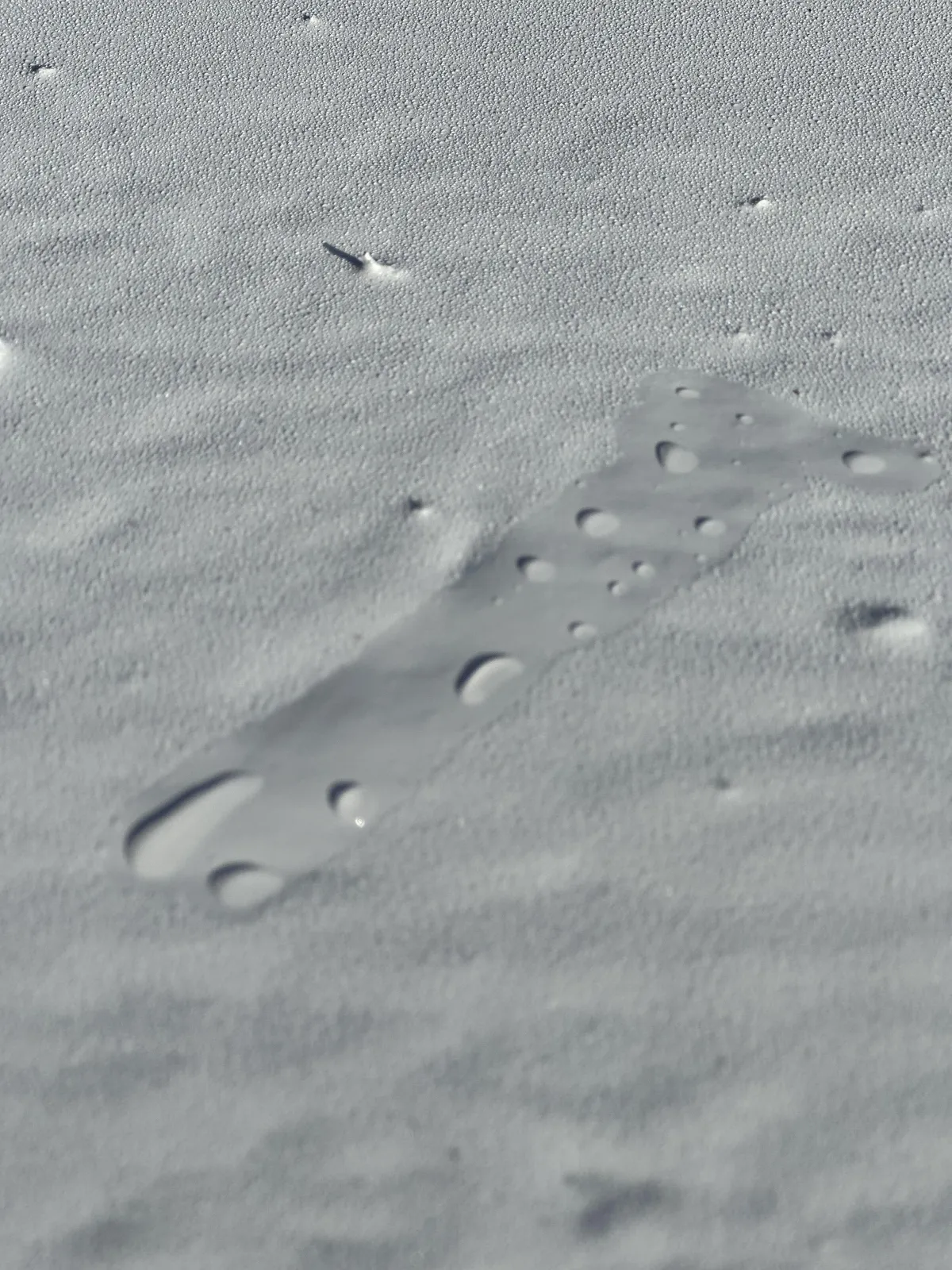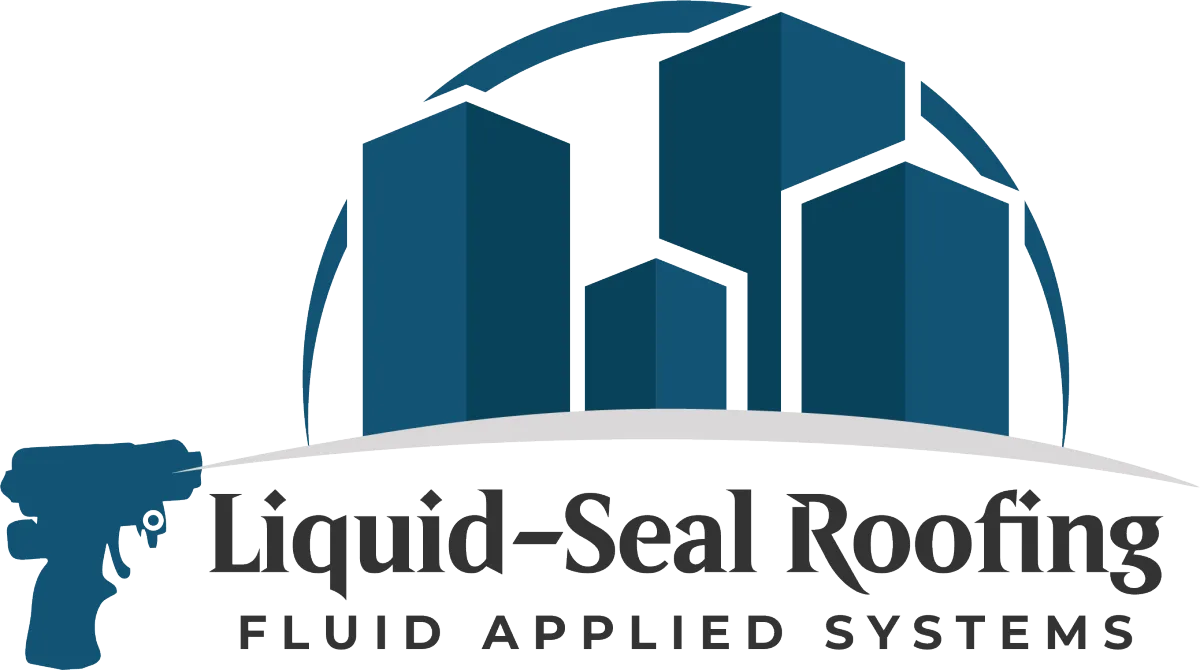BLOG

What type of roof coating is best?
INTRODUCTION
Choosing the right roof coating for your building is crucial, but before you can select the best option, it's essential to consider the type of roof you have. Different materials and roof designs require specific treatments to maximize performance and longevity. In this post, we'll guide you through the top roof coatings used by Liquid-Seal Roofing, including elastomeric, silicone, and our top recommendation—polyurethane. By understanding the specific needs of your roof, you'll be equipped to make an informed decision that ensures lasting protection and efficiency.
Elastomeric Roof Coatings
Elastomeric roof coatings are highly flexible, rubber-like membranes that have become a popular choice for extending the life and enhancing the durability of commercial roofs. Derived from polymers that are formulated to move with the roof surfaces they cover, these coatings are capable of stretching and returning to their original shape without damage. This unique property helps them to absorb and dissipate the heat from the sun while preventing leaks, cracks, and other types of weather-related damage.

Effective Application
Elastomeric roof coatings are highly valued for their safety features, especially in wet conditions. This makes them an optimal choice for roofs that require regular maintenance or may need emergency repairs. Here's a detailed explanation of why elastomeric coatings are particularly beneficial for these scenarios:
Non-Slip Surface: Unlike silicone roof coatings, which can become slippery when wet, elastomeric coatings maintain a more textured, non-slip surface. This feature is crucial for the safety of maintenance personnel who may need to access the roof during or immediately after rain. The inherent traction provided by elastomeric coatings reduces the risk of slips and falls, which is essential during emergency situations or routine service checks.
Regular Access Needs: For buildings with multiple rooftop units, such as HVAC systems, which require frequent servicing, the non-slip nature of elastomeric coatings becomes even more important. These coatings ensure that service personnel can move safely and efficiently across the roof, regardless of weather conditions. This accessibility is vital for timely maintenance and repairs, which helps prevent minor issues from developing into major problems.
Overall Roof Safety: The assurance of a safer walking surface makes elastomeric roof coatings a recommended choice for commercial buildings where safety and ease of roof access are priorities. By choosing elastomeric coatings, facility managers can enhance operational safety, particularly in adverse weather conditions, making it a practical decision for roofs that are accessed frequently.
Versatility and Protection: Although all the roof coatings discussed in our blog—including silicone and polyurethane—offer excellent protective qualities, the added safety feature of elastomeric coatings makes them particularly suitable for roofs with heavy foot traffic or those requiring regular maintenance activities.
In summary, while any of the coatings we offer at Liquid-Seal Roofing will provide significant benefits, elastomeric roof coatings are particularly recommended for their safety features, making them ideal for buildings with high service needs or those prone to wet conditions.
Silicone Roof Coatings

Silicone roof coatings are renowned for their superior weather resistance and longevity, making them an excellent choice for protecting a variety of roofing materials. Composed primarily of silicone polymers, these coatings are designed to provide a seamless, waterproof barrier over your roof. They are particularly effective in climates with extreme weather conditions, as they stand up well to prolonged exposure to sun, rain, wind, and even snow.
One of the standout features of silicone roof coatings is their ability to maintain elasticity and resist degradation from UV rays, which can cause other materials to crack and deteriorate over time. This resilience makes silicone coatings a long-term solution for roof protection, minimizing the need for frequent reapplications. Additionally, the material's natural reflectivity helps reduce cooling costs by deflecting heat and UV rays away from the building, contributing to energy efficiency.
Silicone roof coatings are ideal for flat or low-slope roofs where water pooling can be a problem, as their waterproof nature prevents leaks and water damage. With their ease of application and minimal maintenance requirements, silicone roof coatings offer a cost-effective and durable solution for extending the lifespan of your roof while enhancing its performance against environmental factors.
Polyurethane Roof Coatings
Polyurethane roof coatings are Liquid-Seal Roofing's top pick for the best overall roof protection. These coatings are renowned for their exceptional durability and versatility, making them ideal for a wide range of roofing applications. Polyurethane coatings are composed of two components: a base and a reactor that combine to form a hard, durable film once applied to the roof surface.
One of the key benefits of polyurethane coatings is their superior resistance to both physical and chemical wear. They are particularly effective in protecting roofs from mechanical damage, such as foot traffic, as well as environmental factors, including harsh UV rays and extreme weather conditions. This makes polyurethane coatings an excellent choice for roofs that are exposed to severe weather patterns or require frequent maintenance.
Additionally, polyurethane coatings are highly effective at waterproofing, offering robust protection against leaks. They form a seamless barrier that conforms to the roof, filling in cracks, seams, and crevices, thus preventing water ingress. Their strong adhesion properties ensure that the coating remains firmly attached to various types of roofing materials, from metal to concrete, enhancing the overall structural integrity of the roof.
Polyurethane Base Coat
The foundational strength of polyurethane roof coatings lies in their robust base coat, often regarded as the workhorse of the coating process. This initial layer is critical, as it prepares and protects the roof by addressing its most vulnerable areas—seams and penetrations. Here's how the application of the polyurethane base coat plays a pivotal role in roof maintenance and protection:
Metal Roofs: For metal roofs, the polyurethane base coat is meticulously applied to all seams and penetrations. These are typically the weakest points where water and environmental elements are most likely to penetrate. By reinforcing these areas, the base coat effectively seals the roof, preventing moisture ingress and corrosion, which are common issues in metal roofing. This targeted application ensures that the most vulnerable parts of the roof are fortified first, providing a strong foundation for the additional layers of coating.

Flat and Low-Slope Roofs: In the case of flat and low-slope roofs, the polyurethane base coat is applied across the entire surface. This total coverage is essential not only for sealing against water leaks but also for creating a uniform, protective layer that guards against all forms of environmental stress. The seamless nature of this coating significantly enhances its effectiveness in waterproofing, ultimately preventing the accumulation of standing water which is a prevalent issue in these types of roofs.

Preparation and Application: Before applying the base coat, the roof must be thoroughly cleaned and prepared. This preparation typically involves repairing any existing damage, such as cracks or blisters, and cleaning the surface to remove dirt, debris, and any materials that might impede the adhesion of the coating. Only after these steps can the polyurethane base coat be applied effectively.
Benefits of Polyurethane Base Coat: The application of a polyurethane base coat extends the life of the roof by protecting against UV degradation, thermal shock, and excessive weathering. Its robust adhesion properties also enhance the overall durability of the roof system, making it more resistant to mechanical damages and wear and tear over time.
This meticulous application process ensures that every part of the roof is well-protected, setting the stage for the topcoat that will further enhance the roof’s durability and efficiency. By starting with a strong base coat, Liquid-Seal Roofing ensures that each roofing system achieves maximum protection, performance, and longevity.
Hybrid Roof Coatings

Hybrid roof coatings, combining a polyurethane base with a silicone top coat, represent the pinnacle of roof protection technology. This dual-layer approach harnesses the strengths of both materials to provide unparalleled durability and resilience.
Polyurethane Base Coat: The foundation of the hybrid system is the robust polyurethane base coat, known for its exceptional toughness and elasticity. This layer is crucial for sealing all seams and penetrations, particularly on metal roofs, and providing total coverage on flat and low-slope roofs. It effectively fills in gaps and cracks, creating a solid, waterproof barrier that also resists mechanical damage and wear.
Silicone Top Coat: The application of a silicone top coat completes the hybrid system. Silicone is highly esteemed for its superior weather resistance and UV protection. This top layer adds an extra shield against environmental elements, notably prolonged exposure to sun and heavy rain, which can degrade other materials over time. The silicone's reflective properties also contribute to energy efficiency by maintaining lower roof temperatures and reducing cooling costs.
Benefits of Hybrid Coatings: The combination of polyurethane and silicone offers the best of both worlds—durability and environmental resistance. This makes hybrid coatings ideal for roofs that endure severe weather conditions or require frequent maintenance access. The silicone top coat’s non-slippery surface when wet ensures safety for personnel performing rooftop services, making it an excellent choice for commercial buildings.
Application and Maintenance: While the initial investment in a hybrid coating might be higher than standard single-material coatings, the long-term savings are significant. These coatings extend the roof’s lifespan by preventing the common causes of damage and reducing the need for frequent touch-ups or repairs. When necessary, the silicone top coat can be easily reapplied to boost the roof's defensive properties without a complete overhaul.
For buildings that demand the toughest roofing solutions, a hybrid coating with a polyurethane base and silicone top coat is highly recommended. This system not only provides robust protection but also ensures peace of mind with its extended lifespan and minimal maintenance requirements. Liquid-Seal Roofing advocates for hybrid systems in scenarios where building owners seek the ultimate in roof coating performance.
